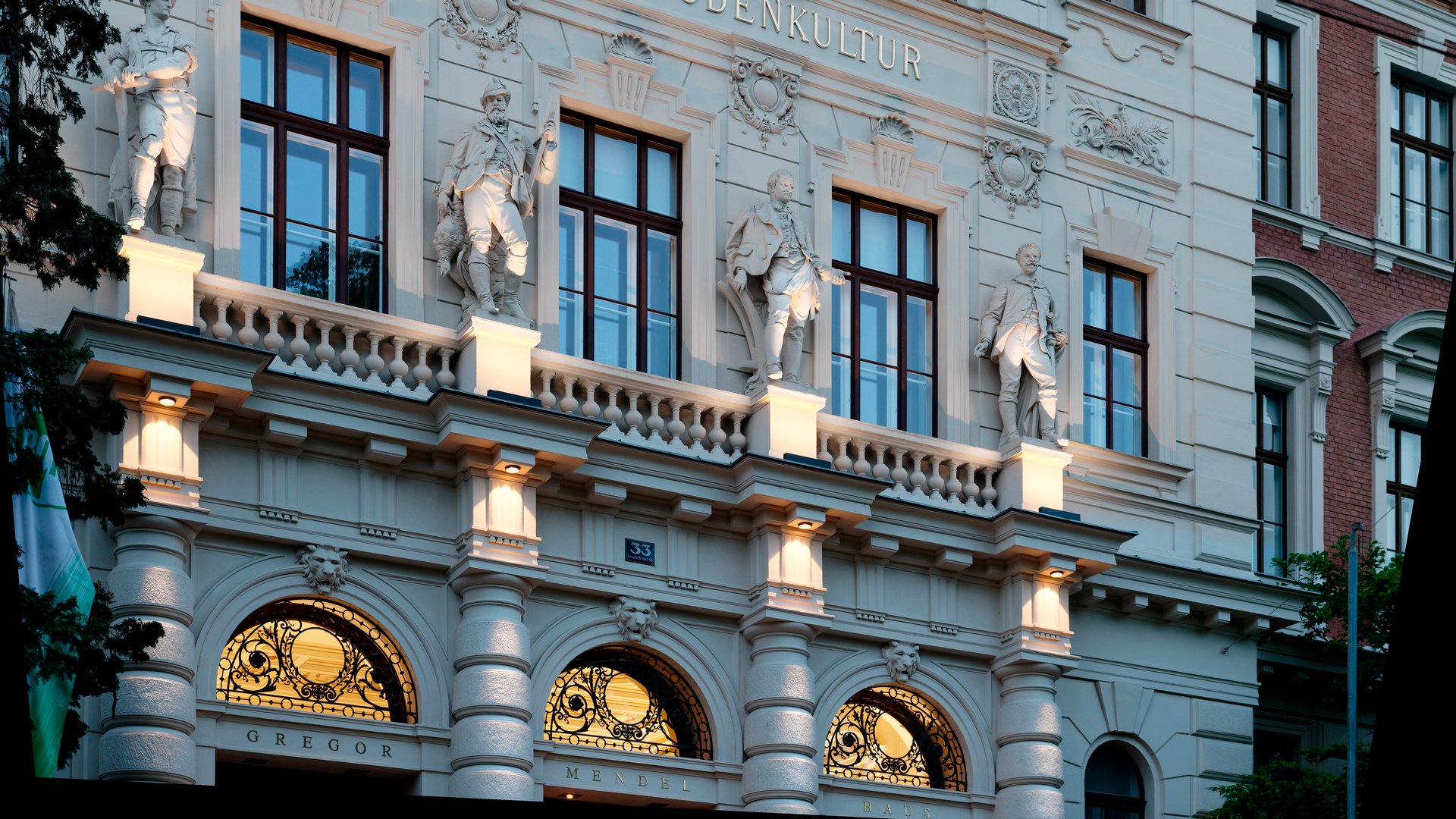
The University of Natural Resources Vienna (BOKU) has long been a pioneer in sustainability. This centre for learning has been devoted to the management of natural resources and sustainable development in synergy with science, industry and society since 1872. The heritage-protected main building was comprehensively refurbished and the imposing outdoor area received a new lighting system using BEGA luminaires.
As visitors approach the Gregor-Mendel Building, which was constructed in 1896 and forms the main BOKU complex in conjunction with the Justus von Liebig building, the eye is drawn by four highly symbolic statues located on the façade directly over the main entrance: a forest worker, a hunter, a farmer and an agricultural engineer. Once the sun sets, these four statues are illuminated by linear BEGA façade floodlights, which - because of the intentional choice of the shorter of the two model lengths - integrate into the architecture, making them virtually invisible. They highlight the four figures with their wide-area, upward-beaming light. The columns below the figures are illuminated with BEGA recessed ceiling downlights with symmetrical light distribution. These luminaires use BEGA Hybrid Optics® technology, which guarantees full control over the illumination despite their compact dimensions. Precisely calculated reflectors with a pure aluminium surface and ultra-clear silicone lenses guarantee optimal light refraction and reflection.
The ground along the building exterior is illuminated with efficient, long-life BEGA surface washers with asymmetrical light distribution This type of illumination creates a noticeable sense of spatial depth. The impression is further enhanced by BEGA pole-top luminaires with a flexibly adjustable attack angle for precision lighting.
The walkway leading towards the street features glare-free BEGA recessed wall and ceiling luminaires, which have proven themselves in numerous construction projects spanning several decades. The lower luminaires are pointed directly towards the ground, while the upper luminaires illuminate the ceiling to create soft, indirect illumination. All luminaires feature asymmetrical light distribution, which reaches all the way to the opposite walls, creating a deep, inviting illumination of the walkway.
After the overall refurbishment of the BOKU is complete, the BEGA luminaires, which were chosen and installed specifically for their respective features, will contribute to the architectural character of this historic and important teaching and research facility from the late Gründerzeit period.
Architects Architekt Neumayer ZT GmbH, Vienna









